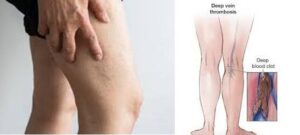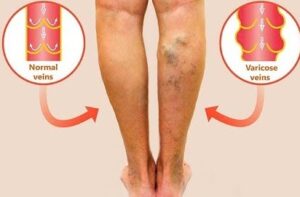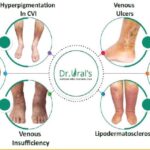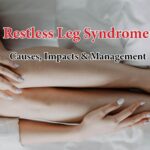Leg pain or muscle cramps ? – It could be symptoms of deep vein thrombosis which can be life-threatening if it is not detected and treated in the initial stage.


Leg pain, muscle pull or swelling in the leg can be an indicator of more serious underlying vein problems – DVT or deep vein thrombosis. DVT can be life-threatening if it is not detected and treated in the initial stage.
What is DVT?
DVT refers to clots that form deep inside your veins – usually the veins in th leg. These clots can cause pain and other symptoms; but if they break free, they can travel through your bloodstream to the arteries near the heart and lungs and can block critical blood flow. While DVT can occur in other parts of the body, it is most likely to happen in the lower legs, thighs and pelvis.
Signs of Deep Vein Thrombosis
Not everyone with DVT shows up symptoms. But here are some of the signs one might notice:
- Persons with DVT show enlarged veins.
- Sudden swelling of legs or arms.
- Skin over the affected area might turn blue or red.
- The skin on the affected area might feel warmer than the other areas.
- When you get ready to stand and walk, you can feel pain or soreness.
- Prolonged pain or muscle pull.
In most of the cases people may not realize that they have DVT until they face a more serious condition like Pulmonary Embolism wherein blood clot breaks free, moves through the bloodstream and ending up in a blood vessel of the lungs. This can be fatal and some of the signs of pulmonary embolism are high heart rate, chest pain, shortness of breath and coughing up blood.
What causes DVT?


– Pregnancy
– Obesity
– Varicose veins
– Trauma or bone fracture
– Cancer
– Birth control pills
– Surgery in the hip, abdomen or leg
Difference between muscle cramp and DVT:
| Muscle Cramps | DVT |
| Cramps may occur in either of the legs or in multiple places | Blood clots are more likely to be concentrated in one leg |
| Cramp can be ‘walked off’ | Pain due to blood clot is more likely to persist |
| Cramp and pulled muscles will cause pain but not necessarily redness in the affected area | Blood clot can cause intense pain in the calf while bending the foot at the ankle.
|
How is DVT treated?
Treatment involves the prevention of blood clots from getting bigger and breaking away and progressing towards the lungs. The risk of DVT can be reduced by simple lifestyle modifications.
1. When at office or while traveling, ensure that you do not sit for long hours.
2. Take frequent breaks every two hours and stretch your lower leg muscles.
3. Avoid tight fitting clothes.
4. Be active and exercise regularly and
5. Don’t miss your routine health check-up.


Dr. Narendra Kumar Reddy G
Senior Consultant – Vascular Surgery
Columbia Asia Hospital Whitefield











